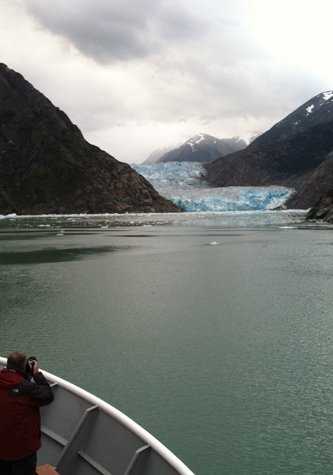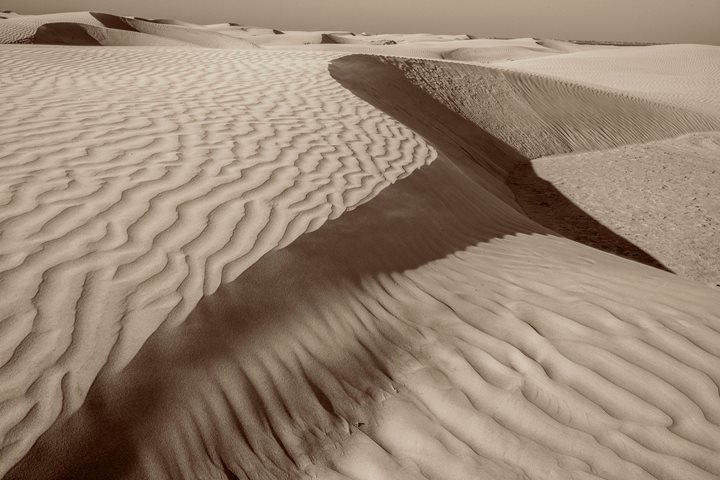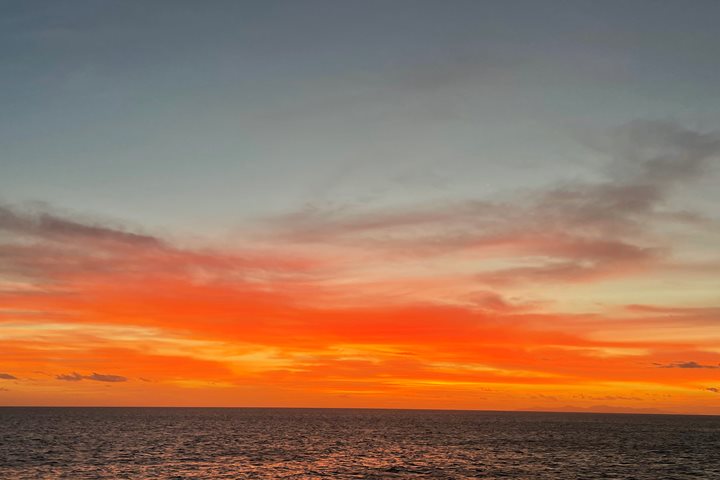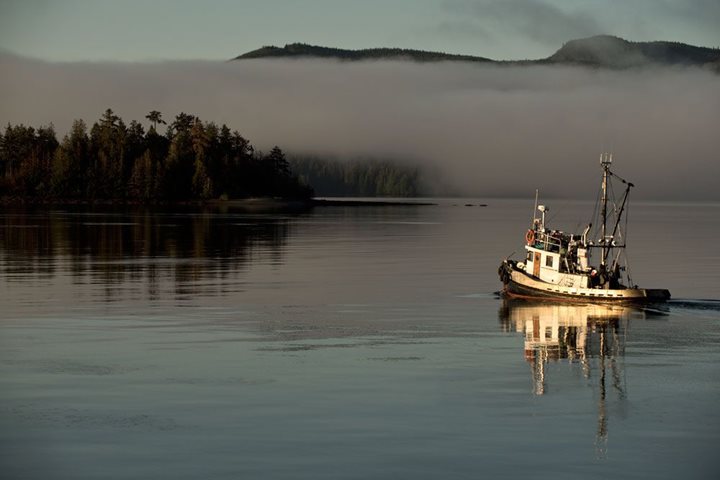The National Geographic Sea Bird left Holkham Bay at dawn this morning and entered Tracy Arm, part of the Tracy Arm-Fords Terror Wilderness Area. Looking out the spa window I wondered how to describe Tracy Arm, how to do it justice? I saw water everywhere in all its forms … water flinging itself over 2,000-foot cliff walls to join 1,000-foot deep seas below, pencil-thin stream waterfalls, and massive gushing vertical waterways. Water-dense clouds covering the overcast sky and lower-lying wisps and puffs intermingling with the trees and vegetation and rocky layers of cliff wall. Steamy fog coming off the sea’s surface, which was also littered with ice chunks of various colors, shapes and sizes. Massive glaciers high up in the mountain tops, the weight of their dense ice pushing them downhill to meet the sea.
Our plans for the morning: make our way to Sawyer Island, where the fjord branches into the Sawyer and South Sawyer glacier faces, and explore this exquisite landscape in our small boats. Treasures included green glacial-silt-filled water, crisp clean air, chunks of floating ice, molting harbor seals, the white thunder crack of calving glacier, the intense blue color of condensed glacial ice, the warmth and light of sun (and patches of blue sky) piercing through the cloud cover, the sparkle of light on water, the striations of the rocky retreating lateral moraines. These are all pieces of the treasure, but the real treasure—the smells and sights and sounds and touch of the place—can only be understood in the flesh and heart and soul experience. What good to read a day’s end summary? Better to be here, to breathe the fresh air, to feel the fog and clouds and waterfall spray in the face, to feel the cool breeze coming off the glacier, followed by the warmth of the sun, to hear the click click click of cameras ….
In the late afternoon the National Geographic Sea Bird anchored in William’s Cove to explore the area on foot and in kayaks. It felt good to have feet on land again.







